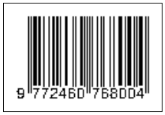Sistem Kontrol Keseimbangan Statis Robot Humanoid Joko Klana Berbasis Pengontrol PID
Pramudita Johan Iswara(1*), Agfianto Eko Putra(2)
(1)
(2)
(*) Corresponding Author
Abstract
Abstrak
Pengontrol Proporsional – Intergral - Derivatif merupakan kontrol loop umpan balik umum yang digunakan secara luas dalam sistem kontrol industri. Pengontrol PID menghitung nilai eror sebagai perbedaan antara variabel proses terukur dan nilai yang diinginkan. Pengontrol akan mengurangi eror dengan mengatur masukan kontrol proses.
Subsistem yang telah dibuat yaitu sistem kontrol keseimbangan robot humanoid Joko Klana berbasis Pengontrol PID sederhana menggunakan akselerometer ADXL202 sebagai masukan. ADXl202 akan membaca kemiringan pada sumbu X ( depan – belakang ) robot Joko Klana dan sumbu Y ( kanan – kiri ) terhadap sumbu referensi X dan Y. Nilai eror dari kemiringan kemudian digunakan sebagai input pada proses kontrol keseimbangan. Keluarannya berupa posisi angular dari beberapa motor servo pada sendi kaki Joko Klana untuk memperoleh posisi paling stabil.
Pengontrol PID mempunyai 3 komponen penting untuk melakukan proses kontrol. Komponennya terdiri dari Kp ( propotional gain ), Ki ( integral gain ), dan Kd ( derivative gain ). Nilai optimal untuk komponen tersebut dari eksperimen ini yaitu : Kp_x = 10, Ki_x = 1, Kd_x = 10, Kp_x = 3, Ki_y = 1, Kd_y = 10, dan Time Sampling = 300mS.
Kata kunci—Pengontrol PID, Sistem Kontrol Keseimbangan, Robot Joko Klana, Akselerometer 202
Abstract
A Proportional – Integral – Derivative Controller (PID Controller) is a generic control loop feedback mechanism widely used in industrial control systems. A PID Controller calculates an "Error" value as the difference between a measured process variable and a desired set point. The Controller attempts to minimize the Error by adjusting the process control inputs.
The subsystem that have been made is the Joko Klana humanoid robot’s balance control system by applying a simple PID Controller using an ADXL202 accelerometer as an input device. ADXL202 will read the Joko Klana robot’s slope on the X axis (front - rear) and the Y axis (right – left) to the referenced X and Y axes. The error value of the slope then will be used as input to the balance control process. The outputs is the angular position of some servo motors in the Joko Klana’s leg joints to acquire the most stable position.
PID Controller has three main components to do the control process. The components are : Kp (proportional gain), Ki (integral gain), and Kd (derivative gain). The optimal value for those components from this experiments are : Kp_x = 10, Ki_x = 1, Kd_x = 10, Kp_x = 3, Ki_y = 1, Kd_y = 10, and Time Sampling = 300mS.
Keywords—PID Controller, Balance Control System, Joko Klana Robot, ADXL202 Accelerometer
Full Text:
PDFArticle Metrics
Refbacks
- There are currently no refbacks.
Copyright (c) 2017 IJEIS - Indonesian Journal of Electronics and Instrumentation Systems

This work is licensed under a Creative Commons Attribution-ShareAlike 4.0 International License.
View My Stats1







